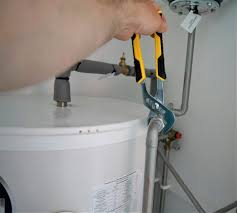Washing your hands regularly is one of the most important things you can do to stop the spread of bacteria in a kitchen. This is especially true if you’re working in a professional kitchen or handling food as part of your job. Foodborne illness can be very serious, so food handlers must take all possible steps to keep themselves and others safe.
In this blog post, we’ll discuss what food handlers should use a hand basin for and why it’s so important to wash your hands properly. We’ll also provide some tips on how to wash your hands effectively.
Why is Handwashing Important in Food Handling?
Hands are one of the most common ways that bacteria can spread. When you prepare food, you’re coming into contact with raw ingredients that may contain harmful bacteria. This bacteria can then be transferred to other foods, surfaces, and utensils if you don’t wash your hands properly.
Foodborne illness can cause a variety of unpleasant symptoms, including vomiting, diarrhea, and stomach cramps. In some cases, it can even be fatal. So, food handlers must take steps to prevent the spread of bacteria and keep themselves and others safe.
What Should Food Handlers Use a Hand Basin For?
Hand basins are designated sinks that are specifically designed for washing hands. They should be easily accessible in all areas where food is prepared or handled. Here are some of the times when food handlers should use a hand basin:
- Before starting work
- After using the toilet
- After blowing your nose, coughing, or sneezing
- After handling raw food, such as meat, poultry, or fish
- After taking out the trash
- After cleaning
- After handling dirty dishes or utensils
- Before putting on gloves
- After taking off my gloves
- When changing tasks
It’s important to wash your hands even if you’re not wearing gloves. Gloves can become contaminated with bacteria just like hands, so it’s important to wash them both regularly.
How to Wash Your Hands Properly
Here are the steps on how to wash your hands properly:
- Wet your hands with clean, warm water.
- Apply a generous amount of soap to your hands and lather well. Make sure to get soap between your fingers, under your nails, and on the backs of your hands.
- Scrub your hands for at least 20 seconds. Sing the Happy Birthday song twice in your head to time yourself.
- Rinse your hands thoroughly under clean, running water.
- Dry your hands completely with a clean disposable paper towel.
Tips for Effective Handwashing
- Use warm water, not hot water. Hot water can damage your skin and make it more likely that you’ll develop cracks, which can harbor bacteria.
- Apply enough soap to create a good lather.
- Don’t forget to clean under your nails and between your fingers.
- Wash your hands for at least 20 seconds. This may seem like a long time, but it’s important to scrub your hands for long enough to kill bacteria.
- Rinse your hands thoroughly under clean, running water.
- Dry your hands completely with a clean disposable paper towel. Wet hands are more likely to spread bacteria than dry hands.
- Turn off the tap using the paper towel you used to dry your hands to avoid contaminating your clean hands.
Additional Hand Hygiene Tips
- Keep your fingernails short and clean.
- Avoid wearing jewelry on your hands when handling food.
- Don’t touch your face with your hands.
- If you have a cut or wound on your hand, cover it with a waterproof plaster before handling food.
By following these simple tips, food handlers can help prevent the spread of bacteria and keep themselves and others safe.
Conclusion
Washing your hands regularly is one of the most effective ways to prevent foodborne illness. By using hand basins and following proper handwashing techniques, food handlers can play a vital role in keeping food safe. For more info click here.
Do you have any questions about handwashing or food safety? Let us know in the comments below!






